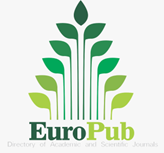Aim and Scope
Calamity: A Journal of Disaster Technology and Engineering is a leading peer-reviewed and open-access journal, published by Institute for Advanced Social, Science, and Sustainable Future (IASSSF), Jakarta, Indonesia, with e-ISSN: 3025-4140. Calamity is published twice a year (January and July), and all articles published are available online with open access.
Aims
Calamity: A Journal of Disaster Technology and Engineering is dedicated to publishing original research that enhances the understanding and management of natural disasters and technological hazards. The journal seeks to advance scientific knowledge in predicting catastrophic events, understanding the risks associated with them, and exploring effective risk management strategies. The journal aims to provide a platform for researchers and practitioners who are engaged in developing innovative solutions for disaster mitigation and response.
Focus
Calamity focuses on fostering interdisciplinary collaboration among scientists, engineers, and practitioners in the field of disaster technology and engineering. The journal emphasizes research that integrates scientific, technological, and operational perspectives to improve disaster risk reduction and management.
Scope
This journal seeks to publish a broad range of scholarly articles, including:
- Disaster Detection and Monitoring Technologies: Technologies for early warning systems, sensor networks, and real-time hazard detection to enhance disaster preparedness and response capabilities.
- Disaster Prediction and Modeling Technologies: Advanced computational methods, AI-based forecasting, and simulation techniques for predicting and assessing disaster risks and impacts.
- Engineering Solutions for Disaster Resilience: Structural engineering approaches, seismic design methodologies, and infrastructure technologies that enhance building and system resilience against natural hazards.
- Emergency Response and Recovery Technology: Investigation of technological solutions for disaster response and post-disaster recovery including emergency communication systems, search and rescue robotics, damage assessment technologies, and rapid reconstruction methods.
- Wildfire Technology: Research on technological solutions for forest fire and wildland fire management including fire detection satellites, suppression systems, fire behavior modeling, and fire-resistant engineering materials and designs.
- Multi-Hazard Risk Assessment Technologies: Studies on integrated technological approaches for assessing and managing multiple concurrent disaster risks. This encompasses comprehensive monitoring systems, multi-hazard modeling platforms, and integrated risk management technologies.















